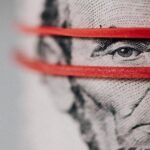Introduction
As the stimulus boost wears off, the US economy may slow. The economic recovery slowed, and prices rose over the summer in the US, according to the Federal Reserve Beige Book, as a resurgence of COVID-19 cases linked to the Delta variant prompted consumers to cut back on spending and supply chain issues persisted, threatening businesses.
At an annualized 6.6 % growth rate, the US economy surpassed its pre-pandemic level in the second quarter of 2021 and remained strong. Bureau of Economic Analysis’ second estimate shows that the economy grew at an annual rate of 6.6 % in the second quarter, beating the first quarter’s growth of 6.3%.
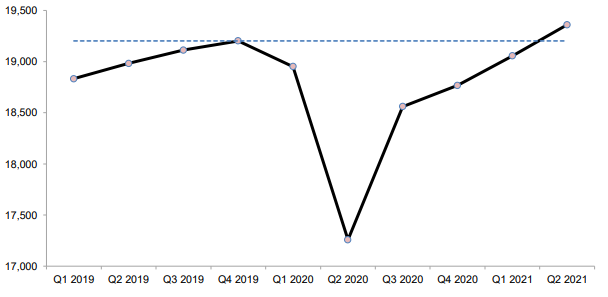
Source: ECLAC Washington Office, based on data from the Bureau of Economic Analysis, US Department of Commerce
The GDP of the US is now above the level it was at the end of 2019, before the pandemic began. Despite the recent slowdown in growth, demand for manufactured goods in the US is expected to remain at historically high levels. However, ongoing supply chain issues and high input prices have limited the output of the US industrial sector, making it difficult to meet demand.
Prospects for US businesses have also been tempered slightly by COVID-19’s revival, which has decreased consumer mobility, spending, and confidence. Numerous firms, especially small ones, are grappling with labor, supply chain bottlenecks, and “temporary” inflationary pressures, as defined by the Federal Reserve.
Quart 4 Overview in the US
Although the US economy grew just 2% in the third quarter of 2021, Wall Street continued its strong recovery rally this month, despite the fact that the first and second quarters of the year saw growth rates of 6.4% and 6.7%, respectively. The third-quarter consensus estimate was 2.7%.
In the stock market, future expectations are more important than past performance. A combination of the rapid spread of the Delta coronavirus, the gradual weaning off of the pandemic-led fiscal stimulus, a massive increase in inflation due to supply-side bottlenecks, and concerns about the Fed’s decision on monetary stimulus all contributed to the third quarter’s tepid GDP growth.
Concerns that were raised earlier in this quarter have faded away by the time the first quarter of the fourth quarter is over. In October, a slew of economic data reaffirmed the strong fundamentals of the American economy. There has been a significant decrease in the number of Delta variants reported in the media as well as strong third-quarter earnings results, which should lead to strong fourth-quarter growth.
By the end of the 4 th quarter, global macroeconomic models and analysts at Trading Economics expect the GDP growth rate in the US to be 4%.
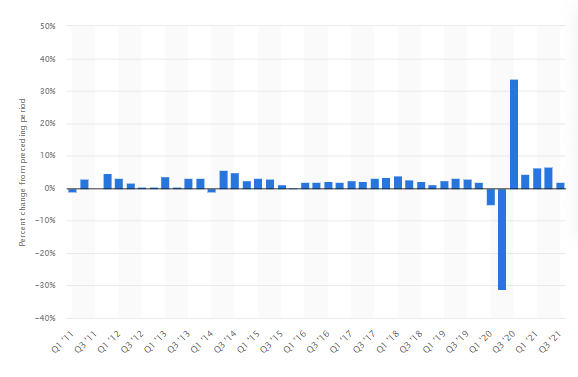
Source: statista.com
US inflation is expected to rise to 6.30% by the end of the 4th quarter of 2021, based on global macro models and analysts’ expectations from Trading Economics.
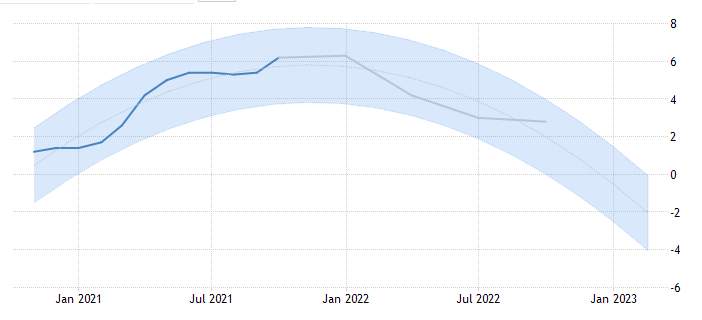
US – Bureau of Labor Statistics announced that total nonfarm payroll employment rose by 531,000 in October, while the unemployment rate fell by 0.2% to 4.6%. According to the Bureau of Labor Statistics, employment growth was most noticeable in leisure and hospitality, professional and business services, manufacturing, and transportation and warehousing. The number of people employed in public schools fell month over month.
According to Trading Economics global macro models and analyst expectations, the unemployment rate in the US is expected to be 5.20% by the end of the 4th quarter of 2021.
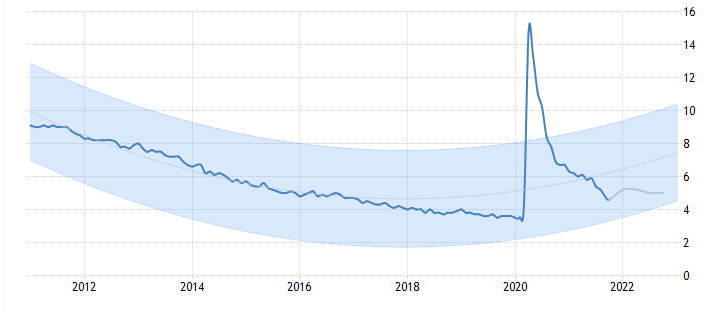
Source: tradingeconomics.com – US Bureau of Labor Statistics
The US Census Bureau’s September 2021 inventory figures show that US wholesale stocks grew 1.4% month-over-month to $742.2 billion, above a preliminary forecast of 1.1% and higher than August’s 1.3% growth. Wholesale inventories in the US will be 1% by the end of 2021, according to Trading Economics global macro models and analysts. This strengthens the US economy.
The US economy is strong in the short term, but the threat of a government shutdown in October or, worse, a debt ceiling crisis cannot be ignored. Moreover, corporate debt is high, with much of it speculative (BB+). Bond payments may be easy to manage now with a strong economy and low-interest rates.
Conclusion
Fourth-quarter growth in the world’s most populous economy has slowed but remains strong and headed in the right direction. Slowing growth has been exacerbated by the delta variant of supply disruptions. To counteract the negative effects of COVID-19, the vaccination process used in the US is being implemented. The recovery of the economy, on the other hand, continues to be uneven.
